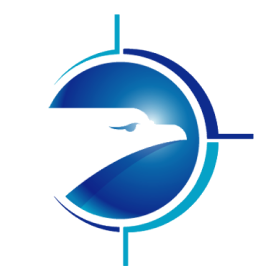We operate a range of unmanned aircraft that are perfectly matched to the task in hand. With few exceptions (namely the M300 and M210V2) we have a backup system of each type ready to go, ensuring continuity should we have a technical issue or damage that grounds one system.
For general aerial imagery, documentary and even film / TV we use a Mavic 3 Pro Cine, an excellent multi-purpose UAS with three cameras: a 24mm lens with 20MP Micro Four Thirds (MFT) sensor, a 70mm lens with 48MP 1/1.3” sensor, and a telephoto 166m lens with 12MP 1/2” sensor. All the cameras can shoot 4K video in H.264 or ProRes, a professional video CODEC. With flight times up to 40 minutes and wind resistance up to 12m/s it really is the perfect all-round system.

The Mavic 3 Enterprise series is the same form factor as the Mavic 3 Pro, and uses the same batteries which is a huge benefit for us. The M3E has a similar 24mm MFT 20MP sensor, however it benefits from a mechanical shutter, essential for mapping operations. It is fitted with a Real-Time Kinematic (RTK) module for precise positioning and geotagging of images with centimetre accuracy. It uses DJI’s commercial Pilot 2 app on a RC Pro Enterprise controller, and offers automatic mapping functions. It can also be used with our UgCS ground control software.
We also operate the M3M, a multispectral variant of the M3E. This has the same 24mm main camera, along with four singleband sensors for green, red, red edge (RE) and near infrared (NIR). It also uses the RTK module for precise positioning. Multispectral imaging allows us to create vegetation indices, and is also used for classification in peatland and environmental monitoring. The RE sensor can also be used for coastal mapping and monitoring.
Although released in 2017, the DJI Inspire 2 is still our UAS of choice for high-end TV and film productions. Using the Super35 Zenmuse X7 integrated gimbal / camera system with a range of DL lenses, we can shoot in ProRes 4444XQ and ProRes Raw in EI mode up to 5.1K. The log footage is perfect for colour grading alongside ARRI or Sony footage. Even though it’s an older system, and recently superseded with the Inspire 3, it performs flawlessly and spare parts including batteries are readily available.
At the top end of the commercial scale we operate the DJI M300 RTK system for mapping and inspection tasks, a large UAS with a MTOM of 9 Kg capable of carrying a wide range of payloads and sensors, and the all-important integration with ground control applications such as UgCS. We use it with the Zenmuse XT2 thermal sensor, P1 45MP full frame camera with 24mm, 35mm and 50mm DL mount lenses, the Z30 HD zoom and L1 LiDAR. With 15m/s wind resistance, IP45 ingress protection and up to 50 minutes flight time, it is a perfect platform for typical Shetland weather.
We still use the DJI M210V2 system – a generation behind the M300 but still a very capable platform – primarily for thermal mapping in congested areas as it can be fitted with an AVSS flight termination and parachute recovery system (FTS/PRS). It is also a great platform for live streaming / broadcast with SDI output straight to OB equipment.
At the other end of the scale we operate the DJI Mini 3 Pro, a great platform for inspections and surveys in congested areas where overflight and proximity to uninvolved people is likely. It shoots great 12MP photos and 4K video, copes well in wind up to 10m/s and has flight times of over 20 minutes per battery. We operate the M3P in the Open category.
Our DJI Avata / Avata 2 first-person view (FPV) system offers an unique perspective for certain filming tasks. Flown using goggles and a hand controller it puts you in the pilot seat for a real adrenalin-fuelled ride! But it has a more sedate use for filming close-in subjects such as flying through a property or industrial site, producing beautifully stabilised 4K footage at up to 100fps. As with the Mini 3 we operate the Avata in the Open category.


